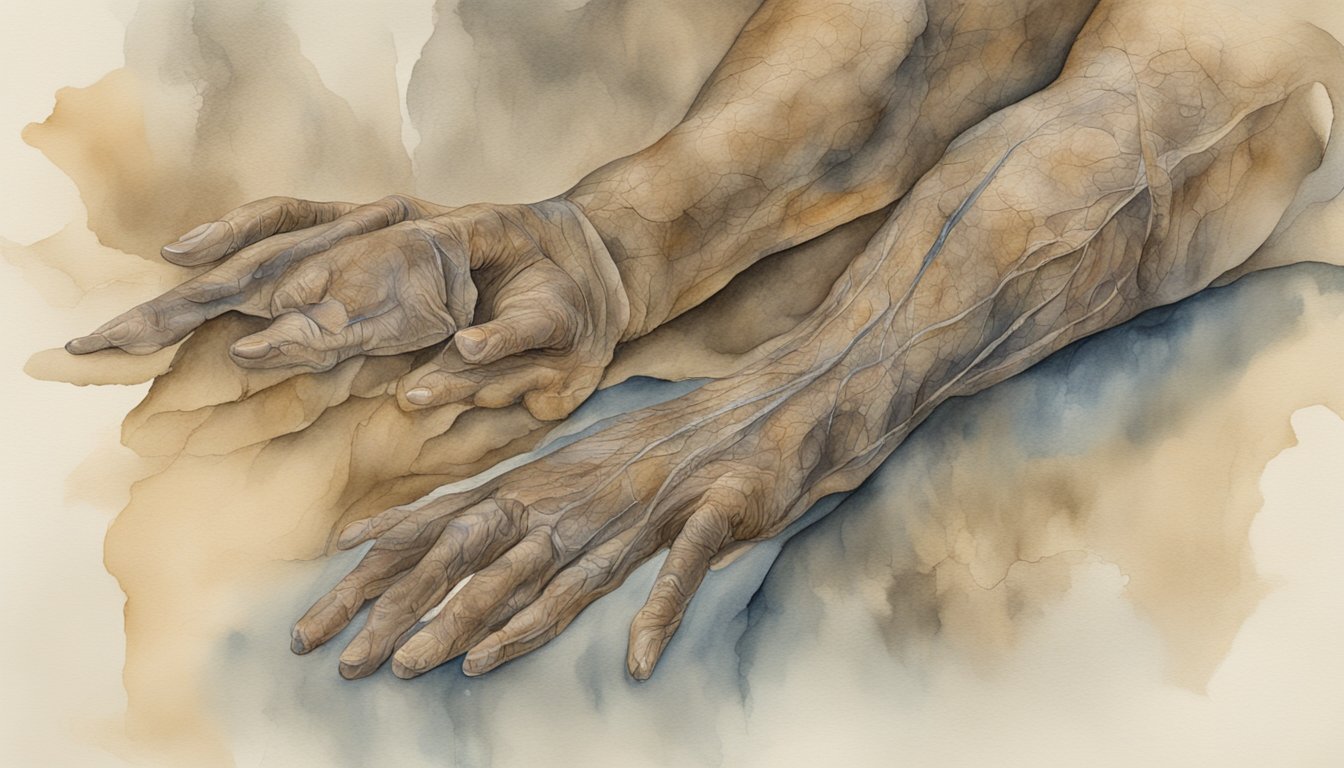Ötzi’s Tattoos: Discovery and Characteristics
When hikers in the Italian Alps stumbled upon what they thought was a mountaineer’s mummified remains in 1991, they couldn’t have imagined the significance of their discovery. This Ice Man, affectionately known as Ötzi, was a time capsule from the Copper Age, his skin adorned with 61 tattoos that have since captivated researchers and the public alike.
Initial Discovery and Radiocarbon Dating
Ötzi’s remains were found by German tourists hiking in the Ötztal Alps, near the border between Italy and Austria. Carbon-dating techniques later revealed that he had lived around 5,300 years ago, placing him in the Copper Age. Intriguingly, Ötzi is one of the oldest mummies discovered with tattoos, which are believed to be made of charcoal and positioned on his lower back, knees, wrists, and ankles, among other areas.
Tattoos Analysis and Techniques
Analysis of Ötzi’s tattoos indicates simple designs: lines, crosses, and parallel lines. It is hypothesized that sharp instruments made incisions in his skin, and charcoal was then rubbed into these cuts to create the tattoos. Researchers have further speculated that these tattoos might hold a therapeutic purpose, akin to acupuncture treatments.
Preservation and Imaging Advancements
The frigid alpine conditions preserved Ötzi so well that it was possible for scientists to study the tattoos using advanced techniques. Dr. Marco Samadelli from the EURAC Institute employed multispectral imaging to detect tattoos invisible to the naked eye. Using infrared and ultraviolet light, layers of his skin were analyzed, revealing tattoos hidden by the aging mummified skin.
The Significance of Tattoo Placement
Studies have suggested that Ötzi’s tattoos were strategically placed on or near typical acupuncture points, hinting that they may have served a therapeutic, or perhaps diagnostic, purpose. This finding supports the idea that the tattoos were part of a prehistoric acupuncture practice, possibly used to alleviate common ailments from which Ötzi suffered.
Comparative Study with Ancient Civilizations
Ötzi provides a direct linkage to the tattooing practices of ancient civilizations, such as the Chinchorro culture in South America. Similar to Ötzi, the Chinchorro mummies display similar forms of body modification, providing insight into the parallel developments in different cultures.
Interdisciplinary Research Contributions
The field of archaeology has often been advanced by the contributions of interdisciplinary research. European researchers, integrating perspectives from anthropology to paleopathology, analyzed Ötzi and his tattoos, published reports on their findings, and opened discussions on their significance, revealing the profound implications of Ötzi’s life and death for our understanding of prehistoric humans.
Ötzi’s Life and the Copper Age Context
The Copper Age mummy known as Ötzi offers a rare glimpse into ancient human life. Discovered in the Alps, his remains provide invaluable insights into wear and tear on the body, cultural significance of body art, and the diet and health of people from over 5,000 years ago.

Analysis of Wear and Tear on Ötzi’s Body
Extensive analysis of Ötzi’s remains has revealed that his body underwent significant wear and tear, including joint and spinal degeneration. These findings suggest a life marked by physical labor and possibly long-distance travel.
Cultural and Symbolic Aspects
The body art found on Ötzi has been a source of fascination, as some researchers posit that the tattoos may hold symbolic or religious significance. Archaeological context indicates that these might relate to the Copper Age culture he was part of.
Ötzi’s Health and Cause of Death
Investigations into Ötzi’s health reveal he suffered from various ailments, including parasites. However, it is his death that intrigues most; evidence points to a violent cause, which in conjunction with his tools and weapons, suggests a turbulent period during the Copper Age.
Ötzi’s Artifacts and Clothing
What Ötzi wore and carried with him paints a picture of Copper Age life. His clothing and decorative artifacts indicate a sophisticated understanding of materials and functionality, which provided comfort and utility in the harsh Alpine environment.
Research on Ötzi’s Genome and Diet
Recent research from the Institute for Mummies and the Iceman in Bolzano has shed light on Ötzi’s genome, revealing details about his ancestry, potential health predispositions, and diet. This data provides a unique perspective on the lifestyle of people during the Copper Age.
Current Research and Open Questions

Recent studies have advanced our understanding of Ötzi the Iceman, a Copper Age individual discovered with well-preserved skin tattoos. New research into his inked epidermis suggests a connection between the placement of the tattoos and therapeutic practices resembling acupuncture. Excavated from the Alps, Ötzi’s remains offer a unique peek into ancient life, including the potential use of tattoos for pain relief.
Archaeologists are intrigued by the fact that some of the tattoos are located on or near traditional acupuncture points, primarily on his left wrist and lower legs. This piques interest in whether there was a shared knowledge between regions, as acupuncture points used in Asia correspond with where some of Ötzi’s tattoos are found. Researchers conjecture whether these markings were a form of early medicinal treatment.
Key questions remain:
- Was it coincidence or clear intent behind the tattoo placements in relation to acupuncture meridians?
- How did Copper Age societies come to practice such sophisticated forms of body modification?
- The spread of tattoos: Was there a cultural exchange between Ötzi’s peers and contemporaneous Asian civilizations?
Current scientific discourse is piecing together historical behaviors, but undeniable gaps remain. Each tattooed line on Ötzi’s over 5,000-year-old skin is a clue in an ongoing archaeological detective story.
Discover more about Ötzi’s tattoos and the ongoing exploration of their significance. The unraveling of these skin stories is not only an excavation of the past but a foretelling of how ancient techniques can provide insights into modern practices.

